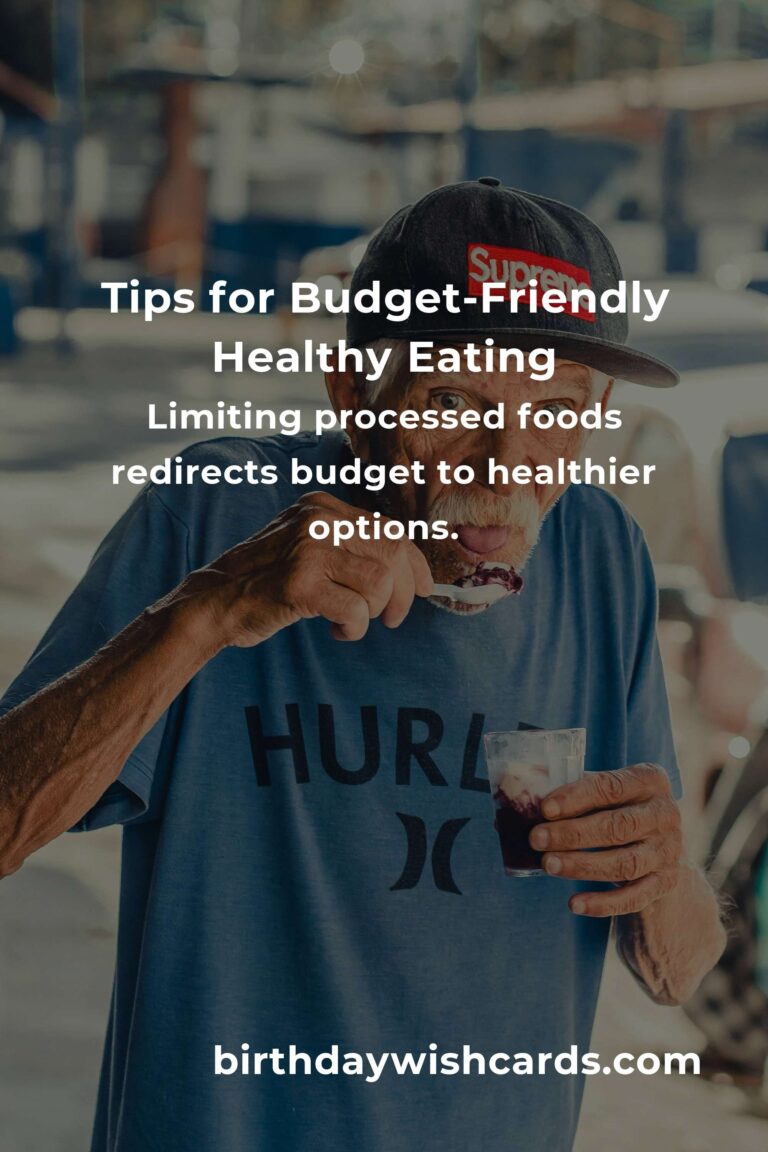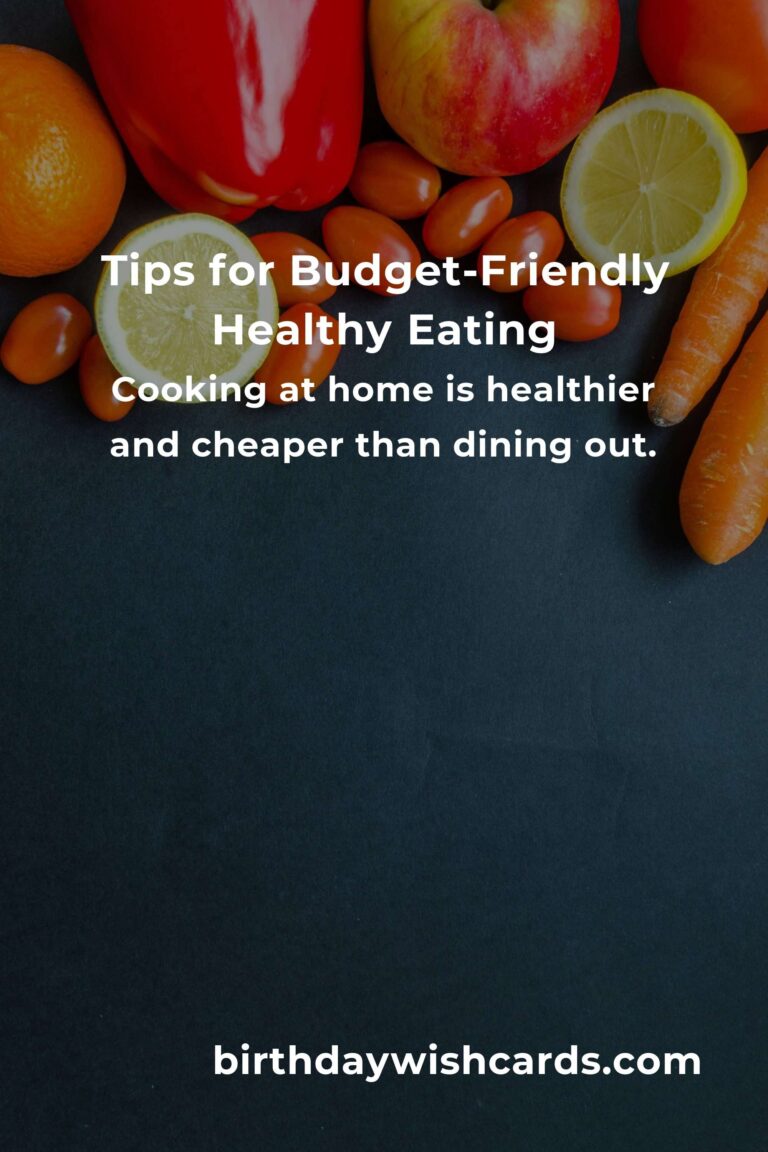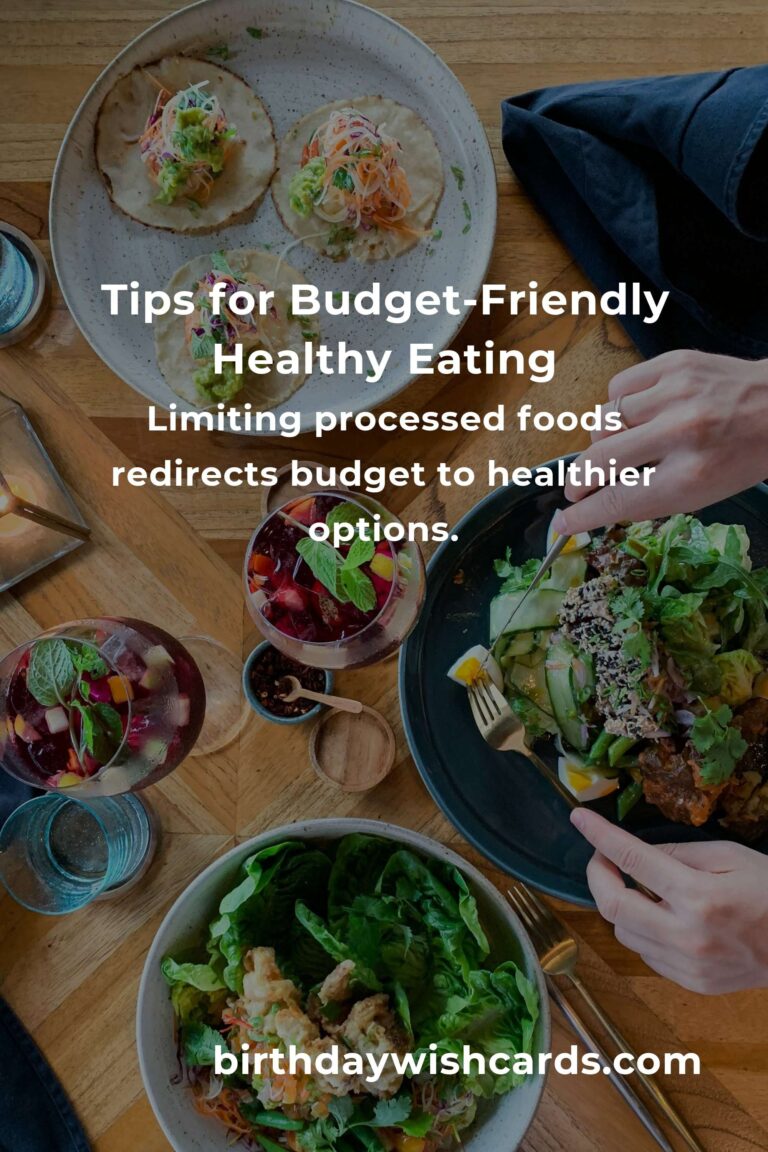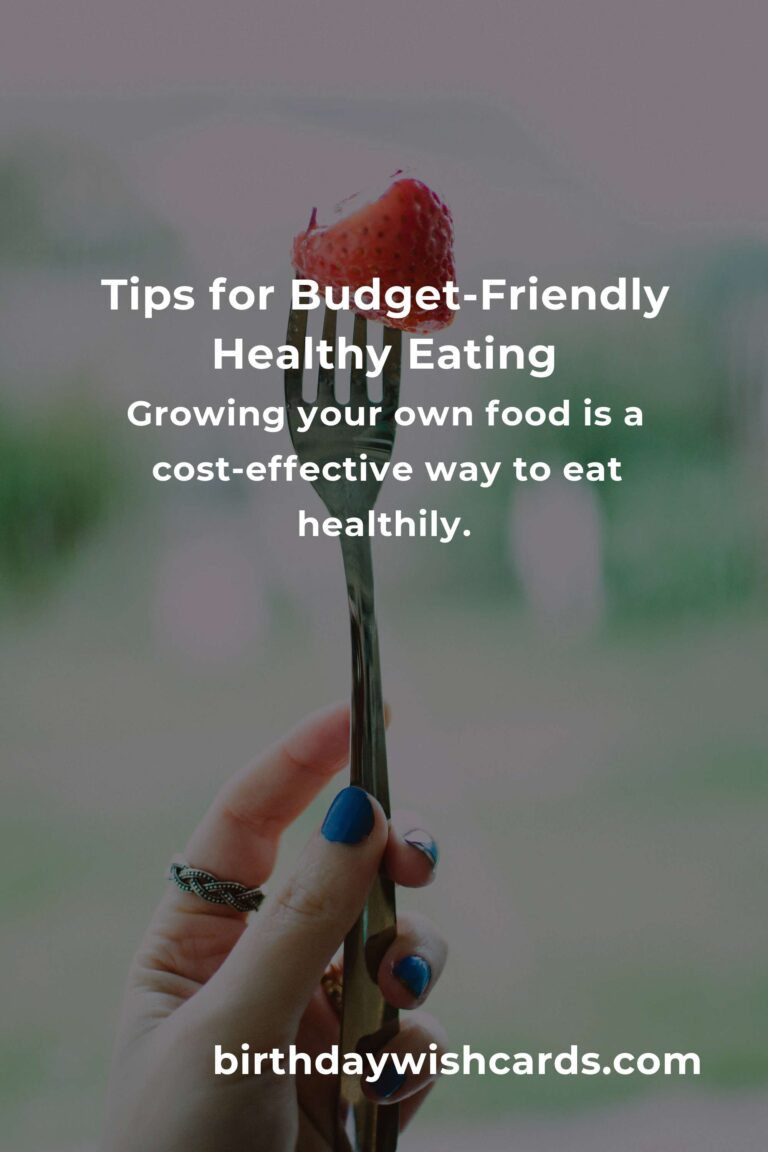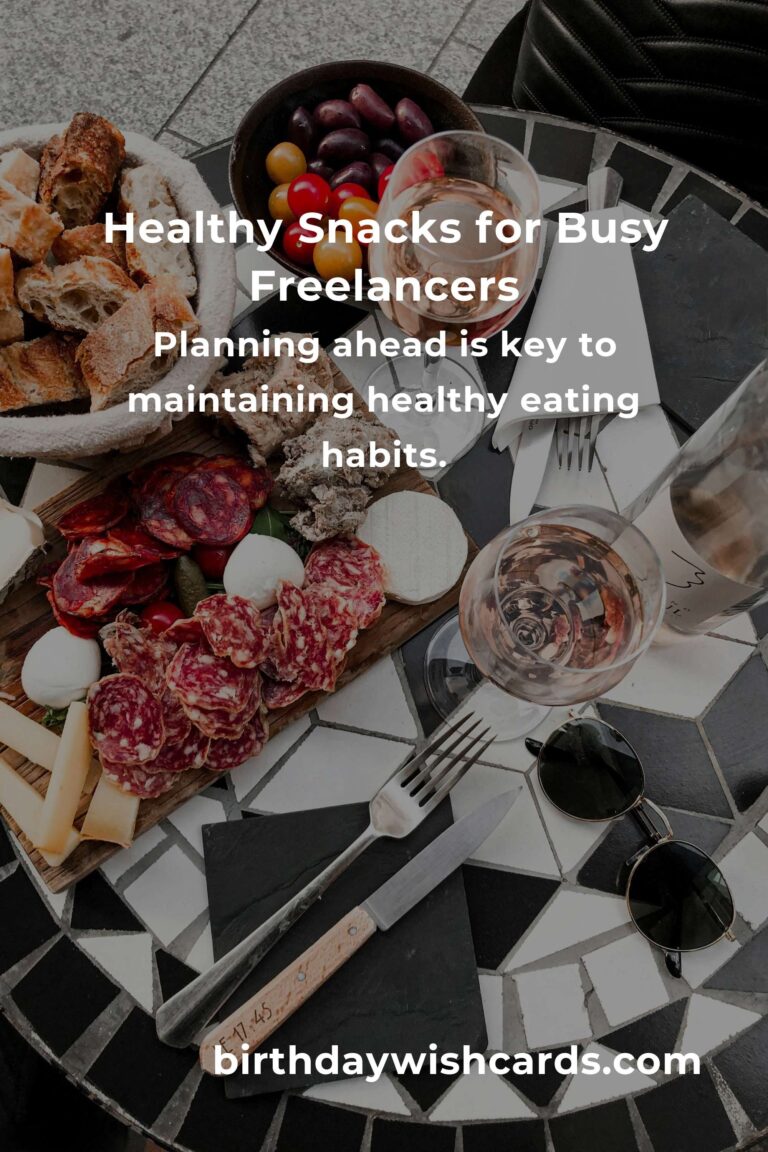
Eating healthy often comes with the misconception that it is expensive. However, with the right strategies, you can maintain a nutritious diet without straining your wallet. In this comprehensive guide, we’ll explore practical tips for budget-friendly healthy eating.
Plan Your Meals
The cornerstone of budget-friendly healthy eating is meal planning. Start by creating a weekly meal plan that incorporates affordable, nutritious ingredients. This not only helps you stay on track with your diet but also reduces impulsive buying.
Consider making a list of staple foods such as whole grains, legumes, and seasonal vegetables that can be used in multiple meals. Planning your meals around these staples can significantly cut down on costs.
Buy in Bulk
Buying in bulk is a smart way to save money. Items like oats, rice, beans, and nuts are typically cheaper when purchased in larger quantities. Ensure you have adequate storage facilities to keep these foods fresh and organized.
Local bulk stores or warehouse clubs often offer competitive prices on healthy staples. Always compare prices and check for sales to maximize your savings.
Embrace Seasonal and Local Produce
Fruits and vegetables are more affordable and taste better when they are in season. Shopping at local farmers’ markets can also provide fresher options at a lower cost compared to supermarkets.
Additionally, consider joining a community-supported agriculture (CSA) program where you can receive a share of the local harvest at a fixed price, often resulting in lower costs than retail.
Cook at Home
Cooking at home is not only healthier but also significantly cheaper than dining out. By preparing your meals, you have complete control over the ingredients and portions, ensuring that your diet remains balanced and nutritious.
Investing time in learning basic cooking skills can be a game-changer. Simple dishes like stir-fries, soups, and salads are quick to prepare and can be made in large batches to save time and money.
Utilize Leftovers
Leftovers are a valuable resource when trying to eat healthily on a budget. Plan meals that can easily be transformed into another dish. For example, a roasted chicken can be used for sandwiches, salads, or soups the next day.
Invest in quality storage containers to keep leftovers fresh. This reduces food waste and ensures you always have a healthy option available.
Limit Processed Foods
Processed foods are often more expensive and less nutritious than whole foods. By minimizing your consumption of packaged and processed items, you can redirect your budget towards healthier options like fresh produce and grains.
Read labels carefully and opt for products with minimal ingredients. Whole foods not only provide more nutrients but also keep you fuller for longer.
Grow Your Own Food
If you have the space, growing your own fruits and vegetables can be a rewarding and cost-effective way to eat healthily. Herbs, tomatoes, and leafy greens are relatively easy to grow and can supplement your diet significantly.
Even if you live in an apartment, container gardening or window boxes can provide a small yet steady supply of fresh produce.
Conclusion
Eating healthy on a budget is entirely achievable with careful planning and smart shopping strategies. By prioritizing meal planning, buying in bulk, and embracing seasonal produce, you can enjoy a nutritious diet without breaking the bank. Remember, the key is to stay flexible and creative with your food choices. Happy healthy eating!
Eating healthy can be affordable with the right strategies. Meal planning is essential for budget-friendly healthy eating. Buying staple foods in bulk can significantly reduce costs. Seasonal and local produce is more affordable and fresher. Cooking at home is healthier and cheaper than dining out. Leftovers can be transformed into new meals to save money. Limiting processed foods redirects budget to healthier options. Growing your own food is a cost-effective way to eat healthily.
#HealthyEating #BudgetFriendly #MealPlanning #HealthyLifestyle #EatFresh





